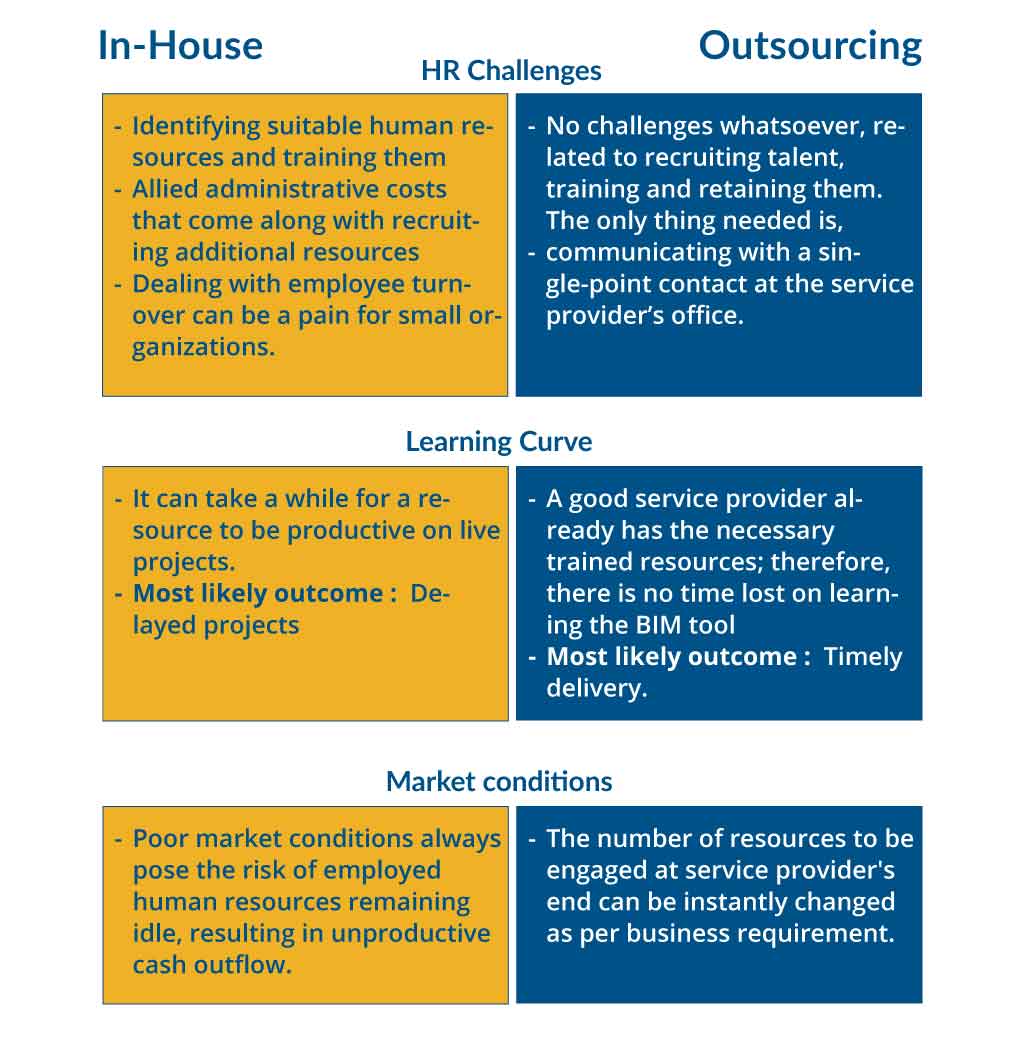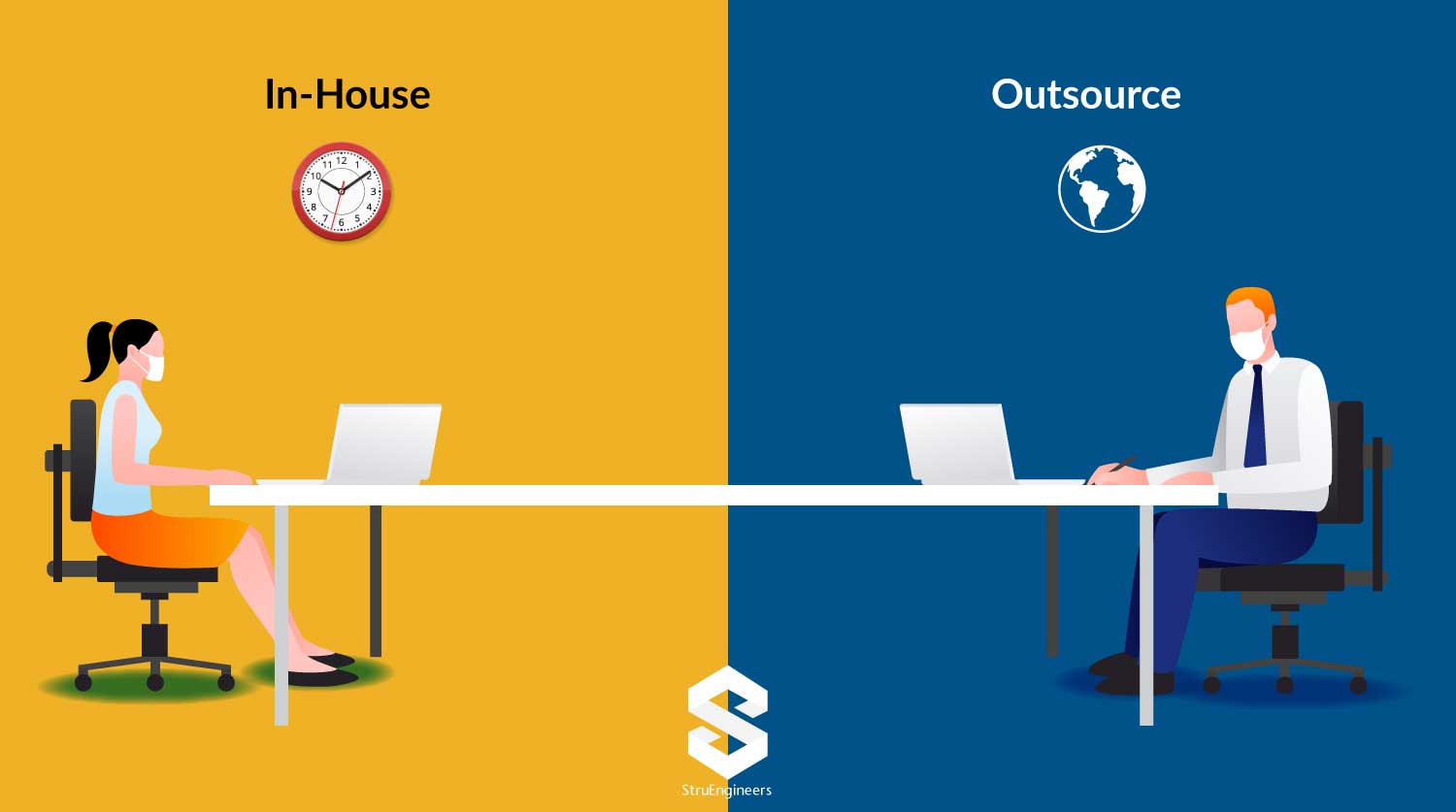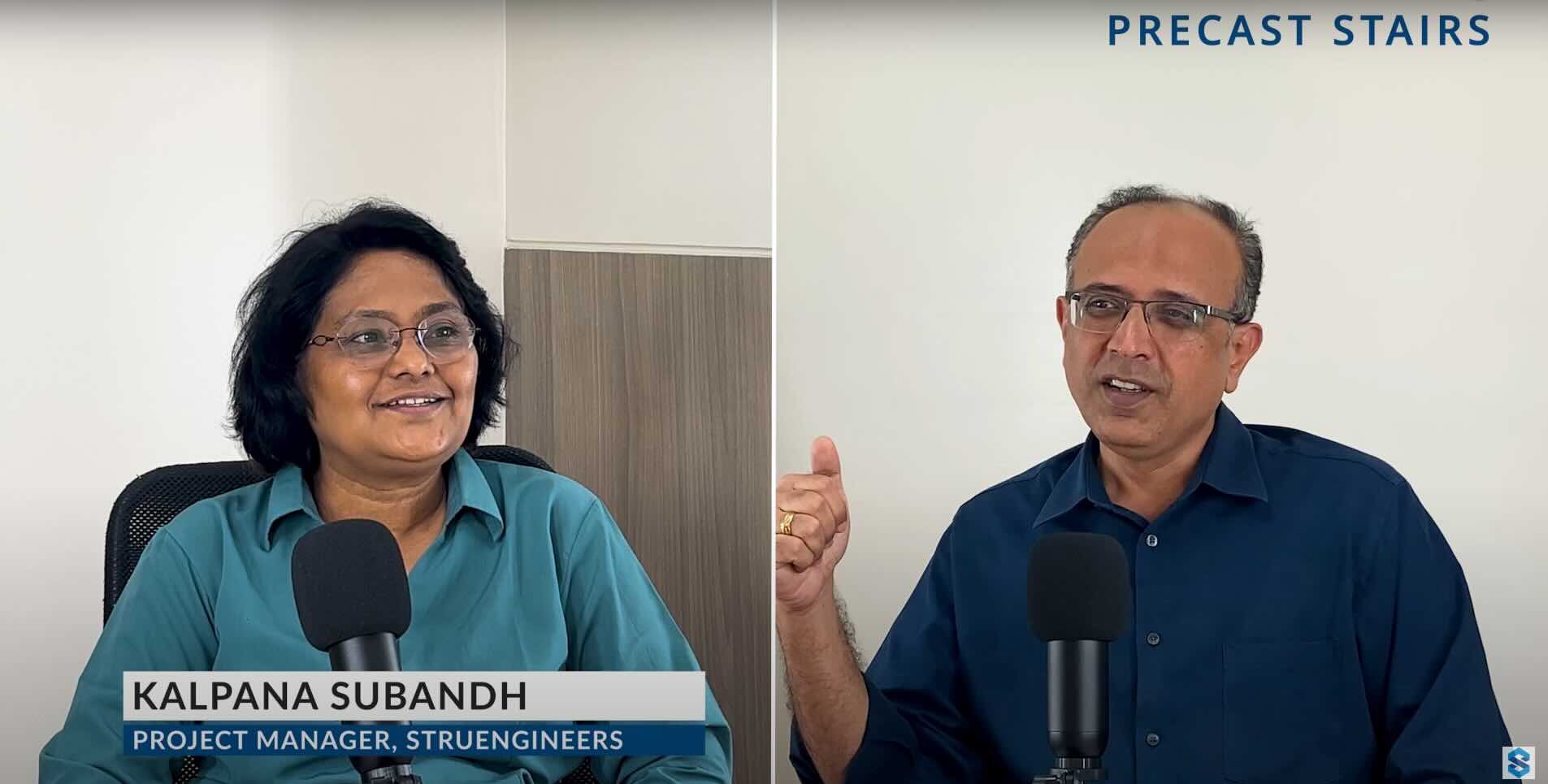As an engineering company, you are always looking for ways to streamline operations and maximize efficiency. One important decision you may have to make is whether to outsource certain tasks or hire employees to perform them in-house. Both options have their pros and cons, and it is important to carefully weigh the costs and benefits before making a decision.
Outsourcing Precast design and detailing
Outsourcing engineering services can be a cost-effective solution as it eliminates the need for employee benefits and training. In addition, outsourcing allows you to access a wider pool of talent and expertise, which can be especially useful for specialized tasks.
Hiring
When you hire employees, you can train and manage them directly. However, hiring employees can also be more expensive than outsourcing, as you must provide benefits and invest in training. In addition, employee turnover can be a major cost, as you may have to continually recruit and train new employees.

Cost-Benefit Analysis
To determine which option is best for your engineering services company, it is important to perform a cost-benefit analysis. Consider the following factors:
- Cost: What is the cost of outsourcing vs. hiring employees? This includes not only the initial cost, but also ongoing costs such as employee benefits, training, and turnover. If we consider both the direct and indirect costs of hiring, outsourcing works out cheaper in most cases.
- Quality: To determine which option will result in a higher quality output is subjective and dependent on several factors. While some argue that utilizing in-house employees can result in improved quality, this may not always be the case as the employed team may not possess the necessary skills, experience, and expertise. On the other hand, service providers are reliant on their reputation for quality and must consistently deliver high-standard output in order to remain competitive in the market.
- Control: The level of control a company may have when outsourcing work is a subject of discussion, however, it is important to note that service providers adhere strictly to the defined scope of work and are subject to regular reporting, monitoring, and evaluation. This means that the notion of control being compromised during outsourcing is incorrect.
- Flexibility: The flexibility of the two options varies. Hiring in-house employees offers more ease in making changes or revisions to the work without incurring additional fees or time-consuming contract negotiations. On the other hand, service providers may limit the number of revisions or changes included in the scope of work, charging additional fees for any modifications beyond the original agreement. Thus, the level of flexibility offered by outsourcing may be limited compared to hiring in-house employees.
- Expertise: Do you need specialized expertise for the tasks you are considering outsourcing or hiring for? Will outsourcing provide access to a wider pool of talent or will hiring employees result in a more invested and motivated workforce?
Conclusion
In conclusion, outsourcing and hiring employees both have their pros and cons, and the decision to outsource or hire employees should be based on a careful cost-benefit analysis.
In uncertain times, outsourcing can be a more flexible and cost-effective solution for companies that are unsure about getting long-term projects. Outsourcing allows companies to quickly ramp up or down their workforce as needed, without having to worry about the costs and responsibilities of hiring and laying off employees. Additionally, outsourcing eliminates the risk of having idle employees, which can be a significant cost for companies.
FAQs: Outsource Vs. Hire- What is better during uncertain times?
Key considerations include the overall cost, the quality of the detailing and design work, control over the project, flexibility in project adjustments, and the need for specialized precast expertise. Evaluating these factors can help determine the best approach for your project’s success.
Outsourcing can reduce expenses related to employee benefits, training, and turnover. It often presents a more cost-effective solution by minimizing both direct and indirect hiring costs, making it an attractive option for budget-conscious projects.
What benefits does hiring in-house staff for precast detailing and designing offer over outsourcing?
Hiring in-house allows for direct oversight, training, and potentially a higher level of investment and motivation from the staff. It also provides greater flexibility in making project revisions without incurring extra costs or undergoing time-consuming contract renegotiations.
Quality can vary and depends on multiple factors. While in-house teams may offer enhanced quality through closer supervision, outsourcing to specialized service providers who stake their reputation on high-quality outputs can also yield exceptional results.
Outsourcing is particularly beneficial in uncertain times for its flexibility and cost-effectiveness. It allows for easy scaling of project resources as needed, without the financial and logistical burdens of hiring and potentially laying off in-house staff, and mitigates the risk of underutilization.



